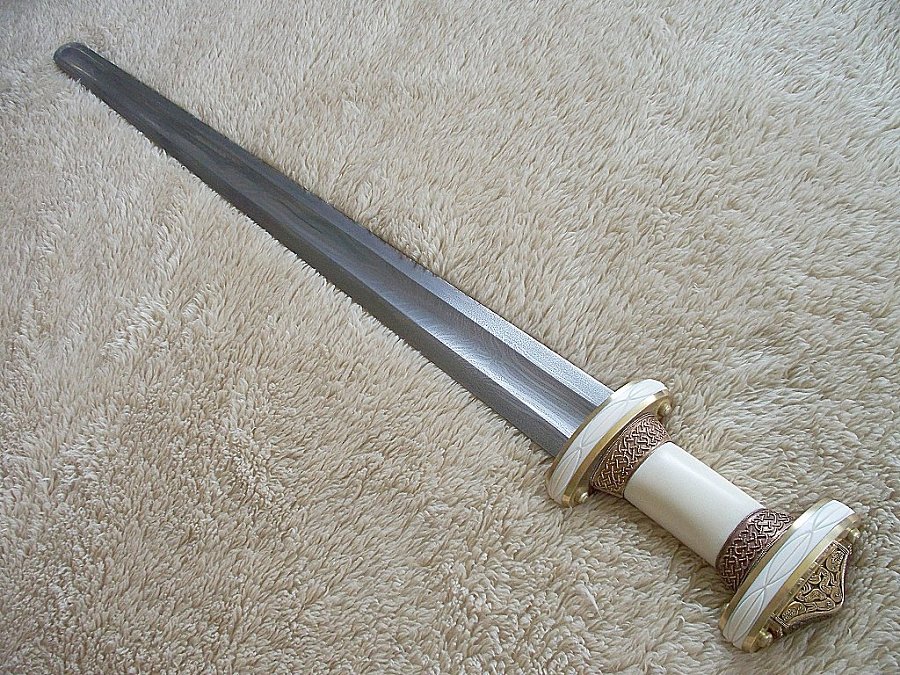
Migration Era Sword Yeshua's Sword
The Type D is named according to the late Ewart Oakeshott's classification for Migration Era hilt types of A through D. The Type D represents a style that came into use during the period of 600-700 A.D. Measurements and Specifications: Weight: 1 pound, 12 ounces. Overall length: 34.5 inches. Blade length: 29 inches.
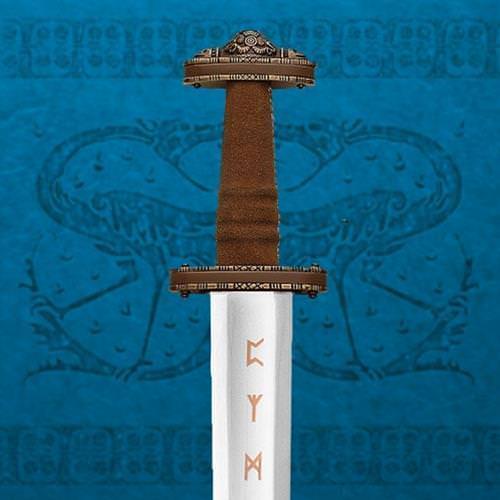
Migration Period Sword Viking Sword Museum Replicas
3, The length of the blade is not great, 59 cm = 23.2 ins, which is on the small size for this type of sword, but the weight . 1,380kg. = 3.04 lbs is very much on the heavy side for either a Viking or Migration Period sword of this size. 4.

Nielo Migration Era Sword Sword, Sword blades, Viking sword
Migration Period Swords and Fancy Hilts & Pommels What It's All About Not much seems to be known about Elis Behmer. But his one and only book "Das zweischneidige Schwert der Völkerwanderungszeit" (The double-edged sword of the migration period) is still the standard for our topic here.

Migration Era RingSword by Big Rock 33...
Introduction to Migration Period Swords Ever pick up a sword and felt its weight in your hand, wondering about its journey through time? When we talk about the Migration Period, we're diving deep into a unique era that saw the Roman Empire's decline and the birth of the early medieval age.

Migration Period Sword Etsy
Migration Period. During the migration period, the Spatha was still widespread. Numerous peoples adopted the sword. The Germans in particular developed the Spatha further in the following period, which made it more long and heavy over time. It was seen as a weapon of the noble and wealthy.
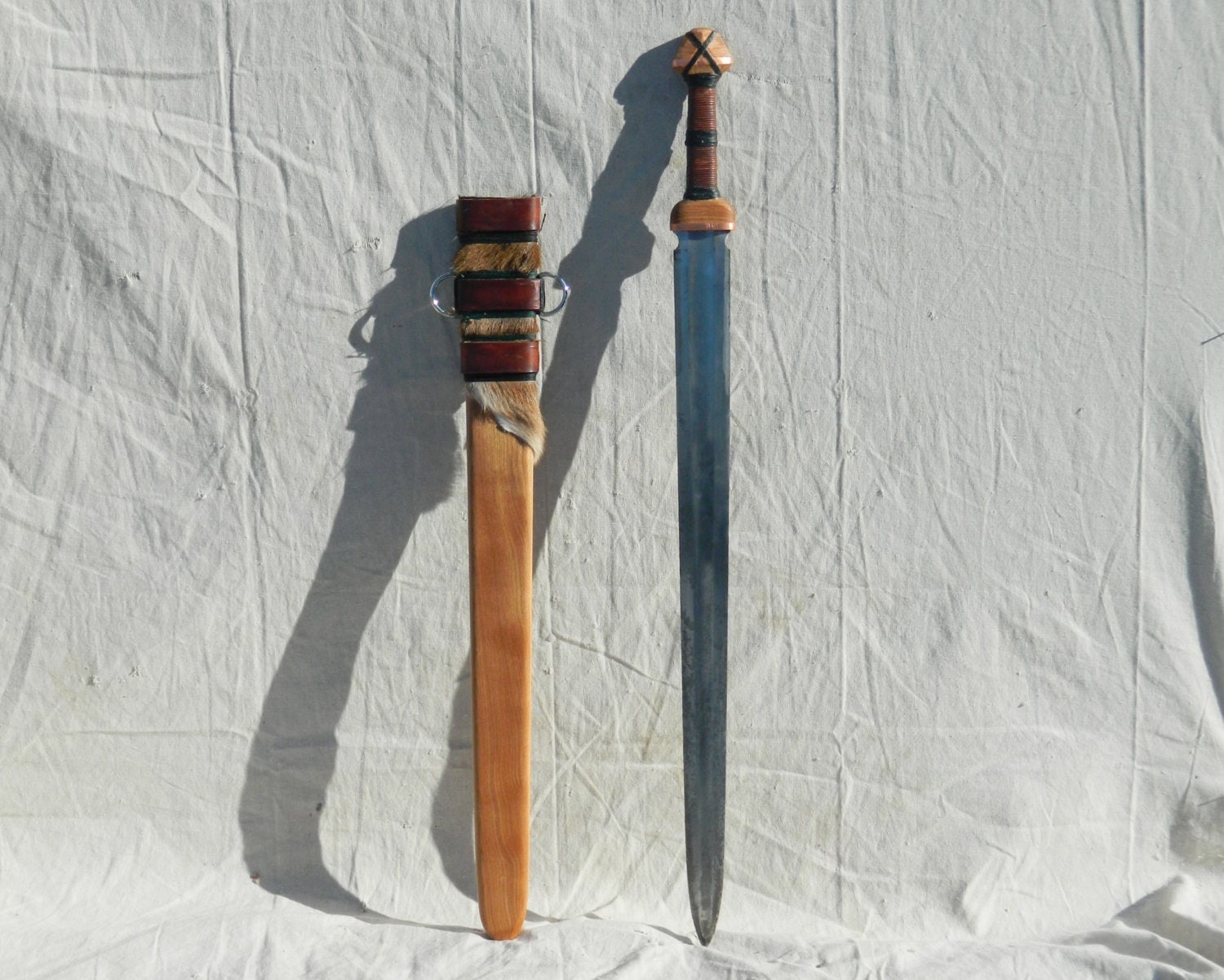
Early Migration Era Germanic Spatha Sword by
Category:Migration period swords From Wikimedia Commons, the free media repository Subcategories This category has the following 11 subcategories, out of 11 total. A Anglo-Saxon swords (2 C, 11 F) M Merovingian weapons (1 C, 12 F) Migration period ring swords (1 C, 15 F) S Seaxes (3 C, 28 F) Snartemo sword (4 F)

Migration Period Sword Viking Sword Museum Replicas
Brown suede wrap over wood grip and intricate bronze parts. Runic copper fill along the fuller was a skilled way to show the beliefs and power taken into battle to full effect and translate to: Cattle - reward for defeating the foe, Tyr - god of battle, Yew - supreme natural toughness.

Pin on sword
The type of sword popular during the migration period and the Merovingian period of European history (c. 4th to 7th centuries), particularly among the Germanic peoples was derived from the Roman era Spatha, and gave rise to the Carolingian or Viking sword type of the 8th to 10th centuries.. The blade is normally smooth or shows a very shallow fuller, and often has multiple bands of pattern.
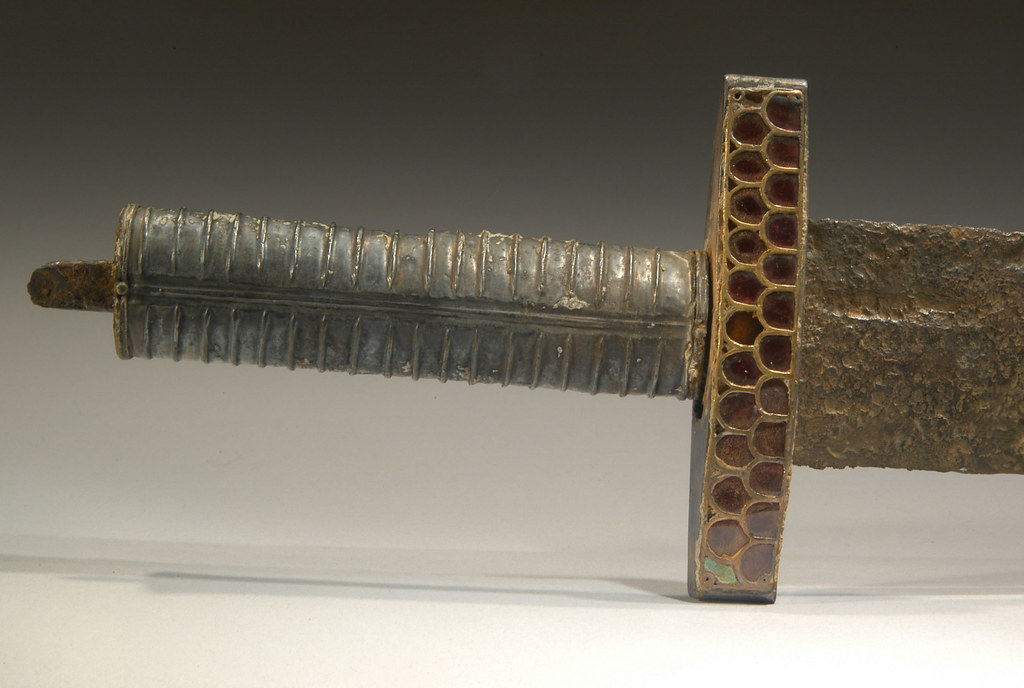
A Migration Period Sword, the Silver Hilt Set in Gold with… Flickr
The Migration Period sword was a type of sword popular during the Migration Period and the Merovingian period of European history (c. 4th to 7th centuries AD), particularly among the Germanic peoples. It later gave rise to the Carolingian or Viking sword type of the 8th to 11th centuries AD.

Migration Period Sword Show and Tell Bladesmith's Forum Board
Migration Period swords in Northern Europe were typically relatively broad, were between 60 and 100cm long, and were blade-heavy, with lightweight handles that did not attempt in any way to counterbalance the blade, being designed for heavy chopping blows rather than fencing.

Viking Migration Period Sword Southern Swords Ltd
The type of sword popular during the migration period and the Merovingian period of European history (c. 4th to 7th centuries), particularly among the Germanic peoples was derived from the Roman era Spatha, and gave rise to the Carolingian or Viking sword type of the 8th to 10th centuries.
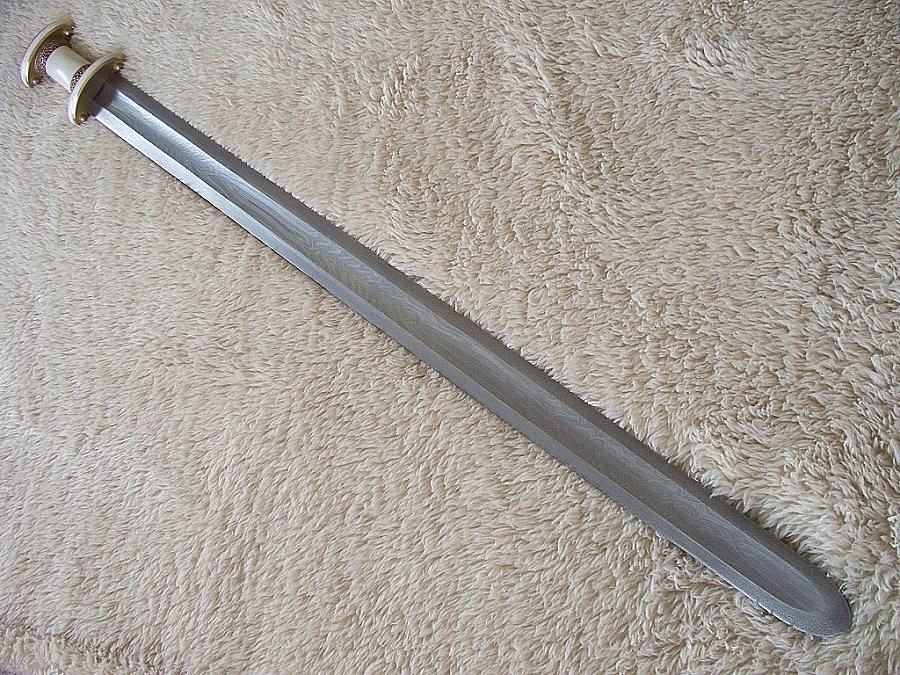
Migration Era Sword Yeshua's Sword
The sword design during the Germanic tribes and Anglo-Saxon era was influenced by technological advancements, cultural interactions, and war tactics. Migration Period swords were broad and evolved into the Anglo-Saxon sword, featuring a double-edged straight blade. Pattern welding was a common technique used, resulting in intricate designs and enhanced strength.

Migration period sword Show and Tell Bladesmith's Forum Board
An expertly made, well-researched and authentic migration period sword ain't cheap. They were not cheap for our ancestors and they have not depreciated in value that much. The Sutton Hoo sword would have cost roughly the same as a present day luxury sports car, but a replica of this famous sword costs around 9k or 10k today.

Ring pommel Migration period sword. Designed by A.J. Sefton, painted by Shelley Wood. http//www
Depiction of a late Roman spatha on a diptych (dated to AD 406) came into widespread use in the Roman army during the 3rd century. It was during this time that the early Germanic tribes adopted the weapon.

Pin on Spirit of the Vikings
Migration Swords are a Classification of bladed weapons (primarily The Sword), which were created during The World History Era known as The ''Migration Period'', Although debated as to it's actual beginnings, The Period began around the 3rd Century AD and ended in the 5th Century AD Period.

Pin on Японские мечи
Migration period sword: Alemanni Vendel Merovian Schwert : Migration period swords were popular during the migration period (4th - 7th century), particularly among the Germanic people. There is just no German name for this kind. These swords are usually pattern welded; take it from there.